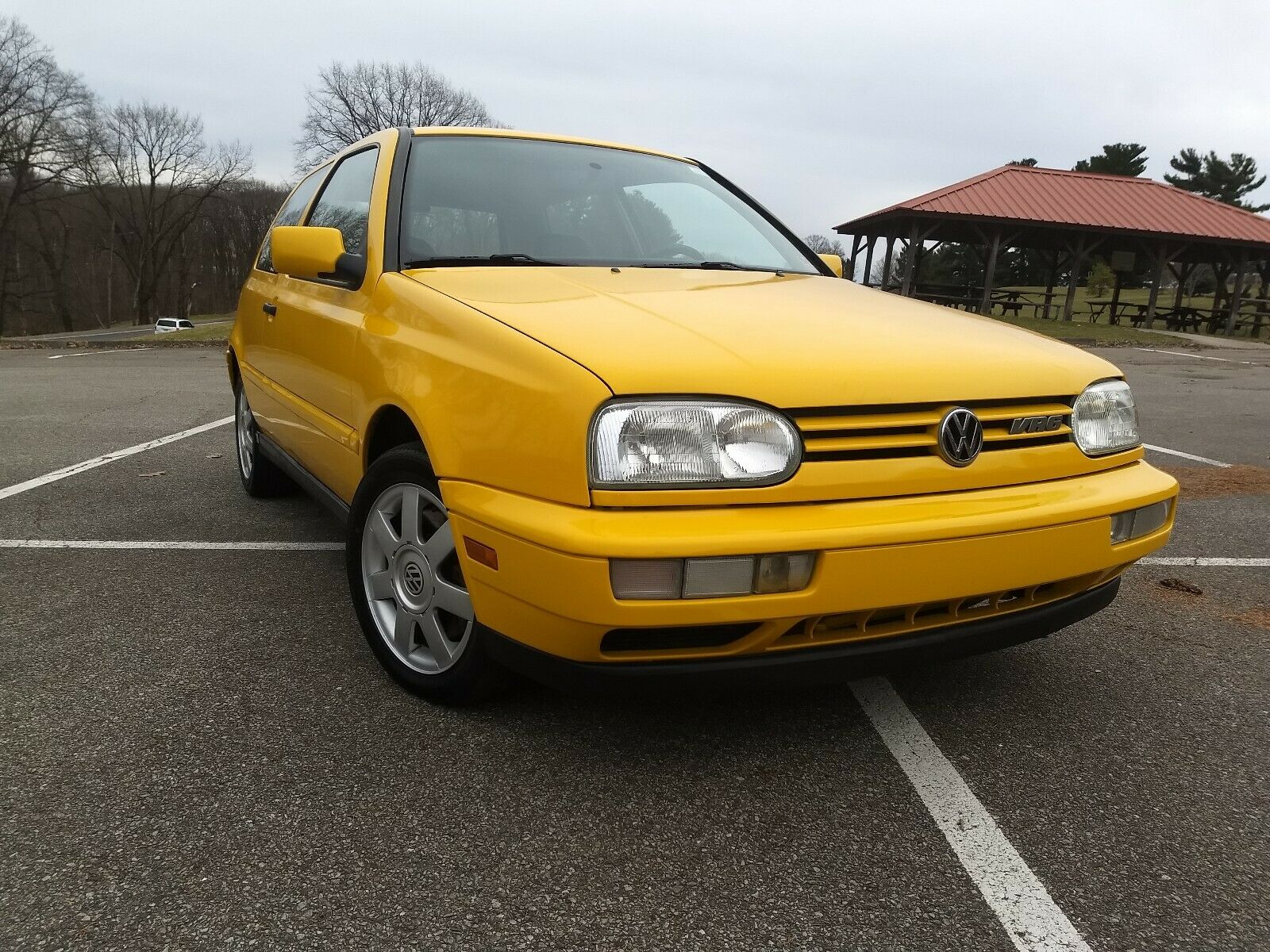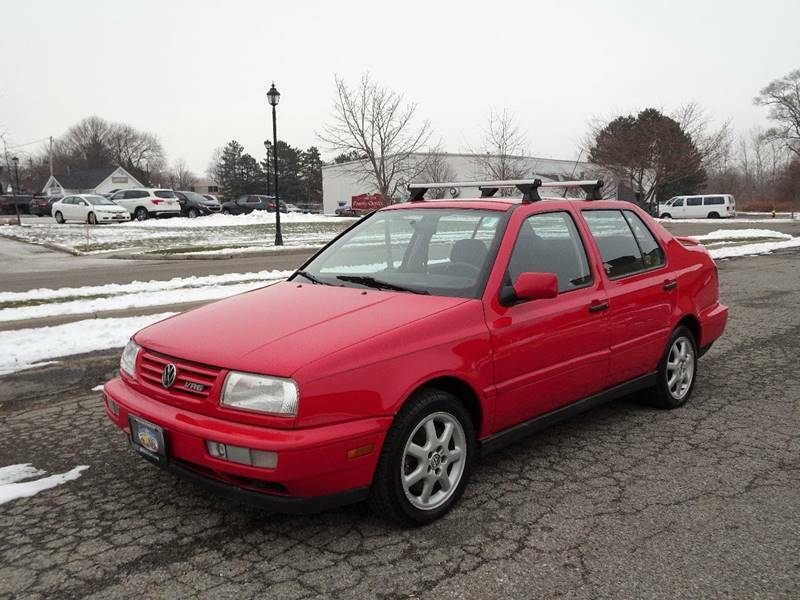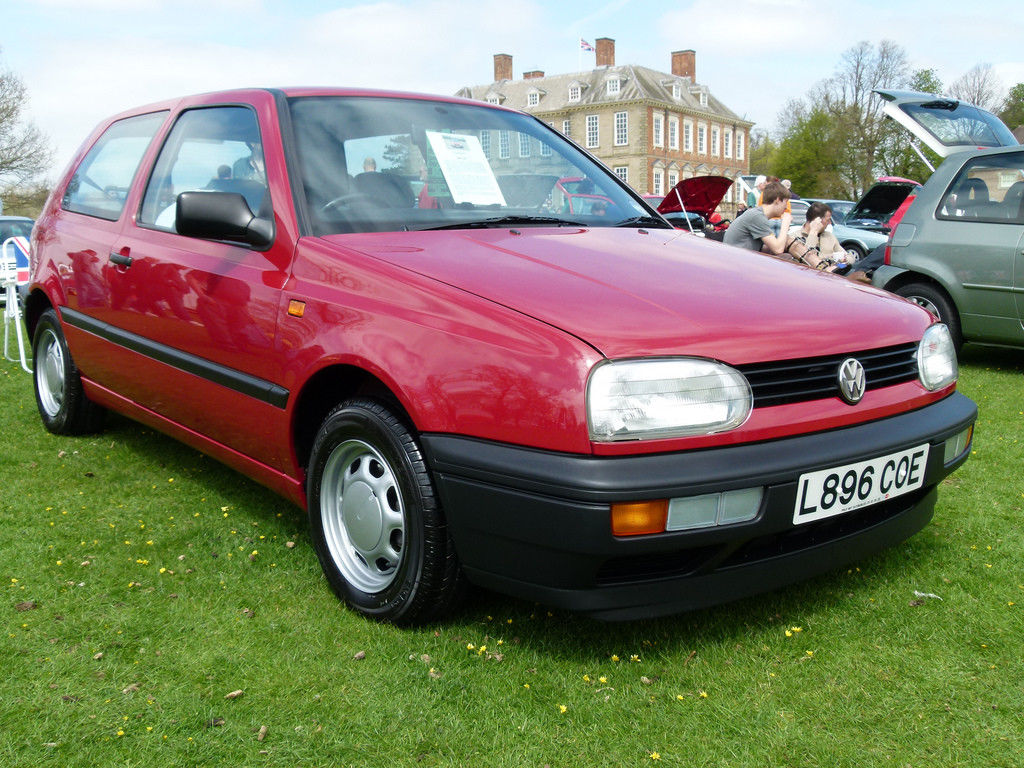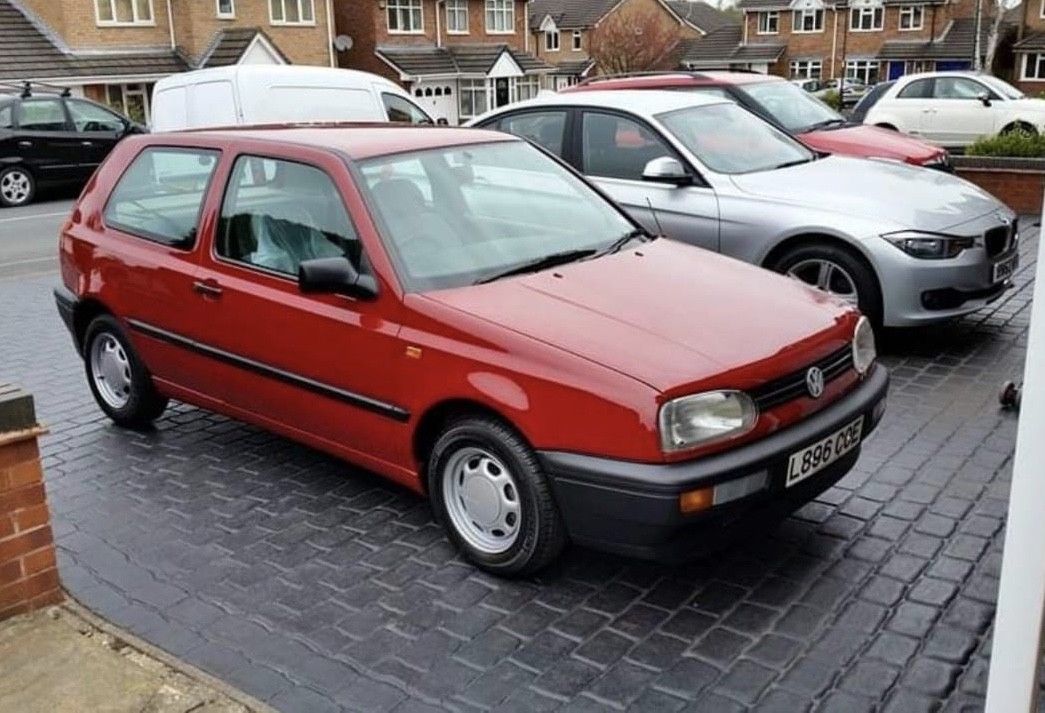Okay, $22,000 is a lot for an old hot hatch, even if it’s the ‘original’. When I was perusing some cars to consider, I noticed that there was a point where Mk.2, 3, 4 and 5 prices were all pretty equivalent. In fact, you can just about buy all four of these cars shown below for the same price as that Kamei X1 GTI. It raises an interesting question; what generation is the one to get at this price point? Certainly a lot depends on priorities – if, for example, you really want a fun daily driver or you’re looking for more of a weekend warrior show car. But let’s look at this group and see which has potential:
Tag: Mk. 3
After its unceremonious and unexplained exit from the U.S. market with the introduction of the third generation Golf in 1993, the GTI came roaring back in a big way for the 1995 model year. Sure, it was bigger, bulkier and well…roundier, but it came with a bunch more gusto thanks to the addition of the VR6 motor as seen in the Corrado and Passat models. The single-overhead cam, twelve valve head lacked the race-bred feel of the Mk.II 16V, the new motor more than made up for it with the addition of two more cylinders. Good for 172 horsepower and 173 lb.ft of torque, it swept the hot hatch from 0-60 in 7.1 seconds and produced a 15.5 second quarter mile at over 90 mph. But much like the original, the GTI was more than the sum of its numbers, with drivers enjoying the great 6-cylinder soundtrack which accompanied the waves of usable torque.
Of course, like all VWs from the period, it was expensive. Really quite expensive. A base GTI VR6 rolled out the door in 1995 at $18,875, and with a few options it wasn’t difficult to breech $20 grand. Yet that was still only a little more than half the money it would take you to grab a same-year M3, which offered only a bit more motivation and cornering prowess. Catch the pesky BMW driver off-guard, and they’d be unlikely to easily out-drag you. So you could either look at this model as a really expensive Golf or a really cheap BMW. That was what the legendary GTI had always been about, and this was a resounding return to form and continuation of the brilliance that was the GTI 16V, even if they felt (and, looked) completely different:
CLICK FOR DETAILS: 1998 Volkswagen GTI VR6 on eBay
2 CommentsWhile the last few VWs have been a bit strange in some way or other, each held a specific subset of people absolutely obsessed with them. The same does not seem to be true of today’s Mk.III Jetta GLX VR6, which is strange to me since it has the hallmarks of a potential collector.
Purists decried the arrival of the “grown up†A3 chassis Golf and Vento, sold as the Jetta in North America. It was expensive, it was heavy (relative to the A1 and A2 chassis, anyway) and the performance was dulled – that was, until the introduction of the GLX model that replaced the earlier GLi models. Now sporting the VR6 that had debuted in the Corrado a few years earlier, the GLX was all around a screamer. It might have been heavier than the GLi had been, but it was quicker to 60, quieter on the highway, more comfortable and better in crashes (if things went south), and returned close to the same fuel economy as the thirsty, buzzy and boxy 16V had. The Volkswagen Jetta III, as it was known in the US, was introduced at a time when US sales were at their lowest and it appeared as if VW was considering pulling out of the US market. This generation Jetta became the best selling Volkswagen by the time the production run ceased in 1999. It was insanely popular and seemed to be the defacto college car of choice for both men and women. Because of that, many of these Jettas fell into disrepair or were totaled, so it’s rare to find a lower mile and clean GLX these days:
CLICK FOR DETAILS: 1998 Volkswagen Jetta GLX VR6 on eBay
3 CommentsUpdate 3/25/19: This car appears to have sold at $5,000.
Update 3/1/19: Although it listed as sold for $3,050 in the auction which ended 2/22, this Harlequin is back and not joking around, with $5,000 worth of bids this time as of this morning.
So I’ll start off by saying that we usually try to find the best examples of cars that we can. You don’t need to be a rocket scientist, or even to have particularly good vision, to note that the Volkswagen Golf in the picture above is NOT the best example out there. In fact, we recently looked at what may be one of the best Mk.3s left out there – albeit an odd one – just a few weeks ago:
However, if you know anything about water-cooled VWs, you also know that the car above is quite special. It was not because it had the best spec, or the most power, or the highest price tag; in this case, it was all about the marketing and it’s one of those cases where an oddball becomes incredibly endearing to a very small group of people. If you were to buy this car and turn up at a ‘normal’ automobile enthusiasts’ home, they’d probably think you’d gone mental with your recent purchase. Full of rust and mis-matched panels, as well as likely a lot of miles and even more likely a ruined interior – not to mention what is sure to be a host of mechanical woes – this Golf probably looks to most like it’s ready for the wrecking yard. But turn up at a VW show in this car even in its partially destroyed state and all eyes would be on you, because this is a Golf Harlequin, and in the world of water-cooled, that’s a pretty special thing:
CLICK FOR DETAILS: 1996 Volkswagen Golf Harlequin on eBay
4 CommentsUpdate 3/15/19: No surprise, this Golf Ryder is down in ask from $16,500 in January to $12,500 today. Heading in the right direction….
In Tuesday’s post about the GTI 20th Anniversary Edition, I mentioned that often the U.S. was left out of the special model production cycle. That was very true for the many limited editions of every generation of Golf. Of course, we did get some special Golfs – the Wolfsburg Edition being the best known, but there was also the Mk.2 Golf GT and, of course, the Harlequin, Trek and K2 models for the third generation. But with clever names like the ‘Driver’, ‘Match’ and the myriad of band-themed Mk.3 Golfs, most were left in Europe. One other model which was a bit of a head-scratcher was the ‘Ryder’.
Of course, Google ‘Golf Ryder’ and you’ll get all sorts of information about Tiger Woods. While the Driver was, like the Golf GT, a de-contented GTI, the Ryder was more confusing. In Mk.2 guise, it got the 4-headlight setup of the GTI, but little else. It had a 1.3 inline-4 barely motivating it, and came to market with steel wheels and manual everything. It did have a special diagonal stripe black interior and a sunroof, but otherwise the only thing you got were badges. They really were playing into the theme that, if you were a driver, you got the more driver-oriented ‘Driver’ model apparently. This was more for people who just wanted a ride in some sort of transportation.
For the third generation, the Ryder returned, but again was even a bit more confusing. Displacement was up to a stock 1.4 rated at 59 horsepower (woooooow!) and it was good for a 16.3 second 0-60 time! Gone were the GTI headlights, replaced by the standard single-chamber stock Mk.3 units. Also not present were painted bumpers, and the steel wheels no longer sported the upgraded trim rings from the Mk.2. The Ryder badges did make a reappearance, but the once standard sunroof didn’t. Also not appearing as standard kit was a radio, air conditioning, cruise control, fog lights…in short, this was about as basic of a Golf as you could get. But since we didn’t get them here, it’s neat to check one out – and what must be the best one out there for sale has appeared in Florida:








